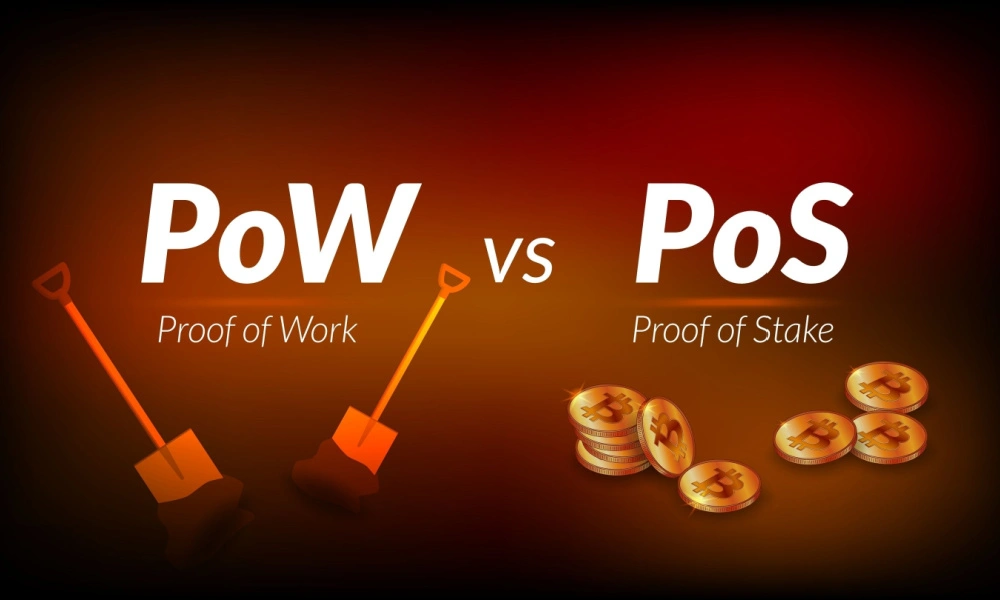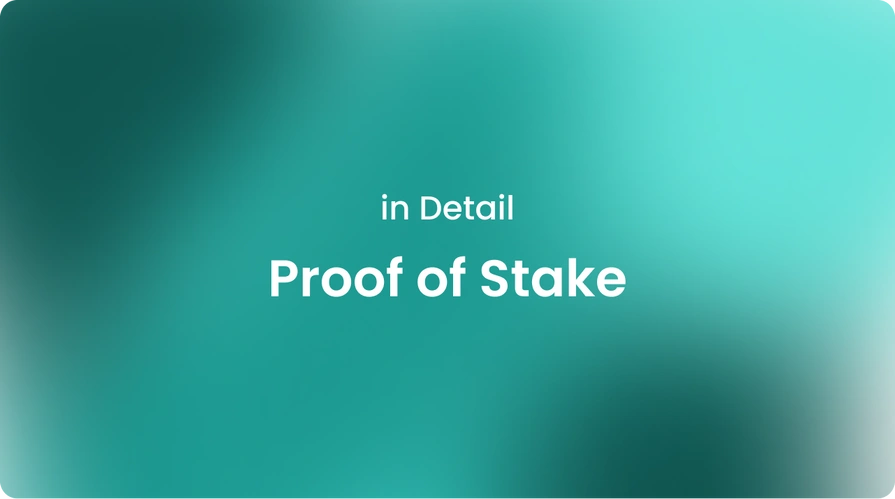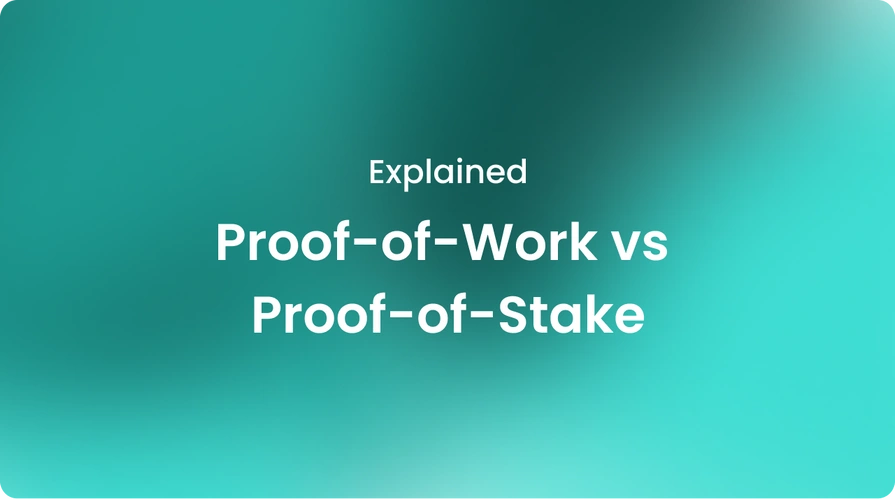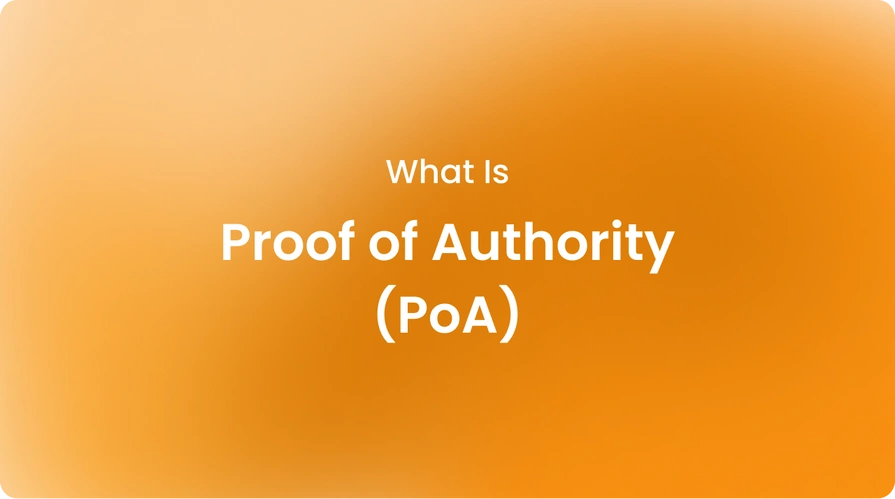|technology, knowledgehub
What Is PoS vs PoA vs PoW?
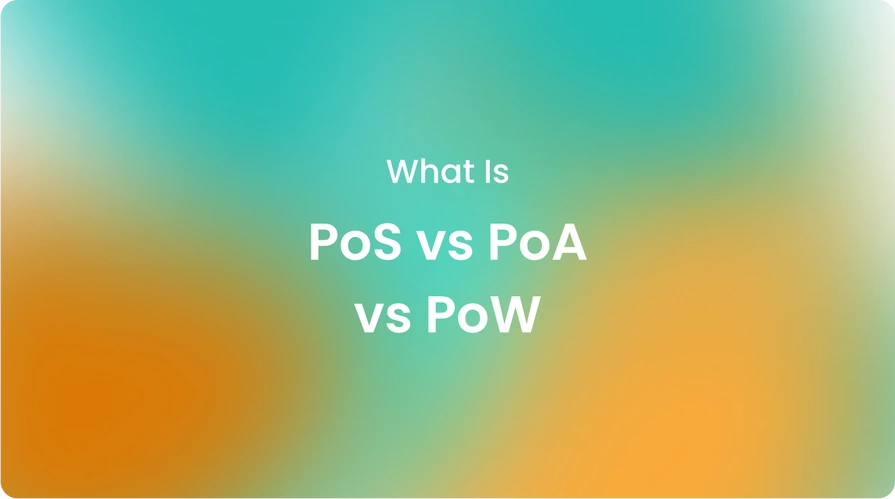
In the modern financial world, decentralized digital assets, such as cryptocurrency, and their security are becoming increasingly important with PoS, PoA, and PoW.
At the heart of any public blockchain lies its consensus mechanism—the process by which participants in a distributed network come to agreement on the order and validity of transactions.
Join us in this article as we explore and compare three prominent consensus algorithms: proof of work, proof of stake, and proof of authority. At their core, all consensus mechanisms allow networks to reach distributed agreements in an untrusted, decentralized environment.
However, the methods for doing so differ substantially. Proof of Work (PoW) was the first mechanism employed to secure networks, utilizing computational power. Proof of Stake (PoS) and Proof of Authority (PoA) take alternative approaches.
While PoW relies on miners competing to solve complex cryptographic puzzles, with the first to solve a puzzle adding the next block, PoS chooses block producers pseudorandomly based on the amount of tokens they hold ("stake").
On the other hand, PoA relies on specific pre-approved identities ("validators") to validate new blocks. Each mechanism achieves security and decentralization in distinct ways. Let’s continue exploring each in detail!
What is proof of work (PoW)?
Bitcoin was the first major cryptocurrency to use PoW, securing its network through competitive crypto mining. Miners dedicate increasingly powerful ASIC rigs and huge amounts of electricity to solving complex cryptographic puzzles and earning block rewards.
This competitive setup secures the network through game theory: no entity can manipulate the blockchain unilaterally without 51% of the total hash power. However, PoW has increasingly faced criticism over its massive energy usage, centralized mining, and vulnerability to hardware monopolies.
Ethereum is transitioning away from proof-of-work towards a hybrid PoS model to become more sustainable and accessible. Other PoW chains have tried increasing block and transaction sizes to scale more effectively, but they also face pressure to decentralize mining to maintain security.
What is proof of stake (PoS)?
PoS offers a greener alternative to PoW, as it eliminates the need for huge amounts of electricity to power mining rigs. In PoS systems like Ethereum 2.0, validators put up their own coins as collateral to validate transactions. If they behave dishonestly or maliciously, they risk losing part or all of their stake.
Someone with 10% of the total stacked crypto coins has a 10% chance of validating the next block. This gives stakeholders an economic incentive to behave honestly and support the network.
Proof-of-stake networks use about 99.5% less energy than PoW networks like Bitcoin. To learn more about staking crypto, you can check out "crypto-staking.”.
About 3% of the world's population, or 230 million adults, are still unbanked, according to the World Bank. For many in developing nations without bank accounts, PoS blockchains could provide easier access to financial services through mobile cryptocurrency wallets.
Additionally, PoS continues to upgrade itself with types of proof of stake mechanisms, such as NPoS, DPoS, PPoS, and more. Each type provides many benefits for security and decentralization.
What is proof of authority (PoA)?
Proof of authority networks designate specific blockchain nodes as validators, similar to notaries in a legal system. The identity and reputation of these original validators are known, replacing economic stakes with social ones.
This provides a more centralized but highly secured consensus model. For example, EURK adopted PoA to build trust through its validators, like Cryptobunq, a crypto-friendly digital bank.
PoA transactions clear much faster than Bitcoin, sometimes in just a few seconds. It's well-suited for private, permissioned chains among known organizations. Public PoA chains with unknown validators are still developing mechanisms to decentralize authority over time.
What are the differences between PoW, PoS, and PoA?
The table below summarizes some of the key differences between PoS vs. PoW vs. PoA:
| Mechanism | Validator Type | Incentive Structure | Energy Use | Examples | | ------------------ | -------------- | ------------------- | ---------- | ---------------------------- | | Proof of Work | Miners | Block rewards | High | Bitcoin, Ethereum (historic) | | Proof of Stake | Validators | Fees and inflation | Low | Ethereum, Cardano | | Proof of Authority | Approved nodes | Reputation | Low | POA Network, xDai |
As seen above, each consensus mechanism provides different tradeoffs around decentralization, energy efficiency, and participation that suit varying blockchain use cases. A neutral blockchain may support multiple consensus models. You can also check “Proof of work vs. Proof of stake” for more information.
Is PoA better than PoS?
Both PoA and PoS have merits, depending on the goals of a blockchain project. In general:
- PoA excels for permissioned private networks among known organizations due to faster transactions and centralized control. It is simpler to implement.
- However, PoS is better suited for public networks seeking long-term decentralization without centralized authority. Over 50% of new chains now use PoS.
- PoA faces challenges maintaining independence from its centralized validators long-term. PoS has proven highly secure, with massive economic incentives weighing validators' actions. However, nothing stops blockchains from combining models, like encrypted voting with stake-weighted votes.
EURK adopted both PoA and PoS to balance these factors, with PoA for speed and security from partners like Cryptobunq, while building towards greater decentralization over time as more stakeholders participate in PoS. The right choice depends on each project's unique priorities and stage of evolution.
Is proof of stake really better than proof of work?
There remains debate around whether PoS truly improves upon PoW in every way. While PoS addresses the scaling and sustainability flaws inherent to PoW mining, it also introduces some risks:
- Centralization risk if a few wealthy whales control a disproportionate stake and voting power on protocol changes.
- A nothing-at-stake problem arises if validators have little to lose from supporting multiple forks of the same blockchain.
- Long-range attack risk exists if validators' staked funds remain locked, allowing the potential for future 51% attacks.
However, over a decade of evolution, PoS implementations have iterated secure solutions to these issues. PoS has proven at least as secure as PoW, while delivering major efficiency gains and fostering broader participation.
Overall, it appears that PoS is poised to surpass PoW as the dominant model, but the long-term proof of this remains to be seen as each method continues to innovate for different targets.
Cryptobunq, which supports EURK with advanced PoS and PoA consensus, aims to build a more sustainable and equitable system through innovations like liquid staking.
As an expert one-stop-shop crypto service provider, CBQ offers many crypto solutions for your business, from tokenization to node as a service. You can easily integrate crypto services into your business and individual projects to benefit from blockchain-powered innovative solutions.
What is the impact of different consensus mechanisms?
The choice of consensus mechanism has widespread impacts on how a blockchain network functions at every level.
- Security and decentralization tradeoffs like susceptibility to 51% attacks or reliance on central authorities.
- Resource efficiency around sustainability, like PoS using fractions of PoW's energy consumption.
- Scalability is based on the ability to process transactions per second and blockchain size limits.
- Participation barriers like specialized mining gear or requiring large crypto holdings.
- Economic incentives include distributing block rewards and transaction fees.
- Governance processes for protocol updates as stakeholder interests diverge.
By understanding how PoW, PoS, and PoA achieve consensus differently, blockchain architects can design protocols tailored to strategies like speed, sustainability, decentralization, or access. New solutions may also hybridize existing approaches.
Which one is the best crypto consensus mechanism?
With continuous innovation, it's difficult to declare any single model as the definitive "best crypto consensus mechanism." Each consensus mechanism entails tradeoffs that make it suitable for different use cases:
- PoW excels at security through incentives but faces energy and participation critiques.
- PoS addresses sustainability while still providing strong security, as seen with Ethereum 2.0's success.
- PoA delivers speed through known validators but raises centralization concerns long-term without democracy.
Rather than compete, these models will likely continue coordinating and hybridizing the strongest aspects of each other. The future may see optimized PoS variants for public infrastructure and private PoA networks with decentralized governance of validator selection.
By offering services across consensus models, from PoS and PoA stablecoins to advanced multi-chain solutions, Cryptobunq aims to empower builders to make whichever trade-offs best serve their goals of innovation, access, and sustainability.
The bottom line
PoW, PoS, and PoA each offer viable approaches to distributed consensus with profound implications for blockchain ecosystems. As the industry matures, newer networks integrate lessons from all consensus forebears to optimize security, speed, and participation.
Understanding the interplay between consensus mechanisms helps envision next-generation solutions and stay informed as this innovative space rapidly progresses. Truly neutral platforms may allow all mechanisms to coordinate strengths towards a sustainable, inclusive financial future.
As we have seen through examples, stablecoins like EURK balance speed, access, and sustainability through hybrid PoS/PoA with Cryptobunq, demonstrating the power of coordinated rather than competing models.
Interested readers can learn more about Cryptobunq's products and solutions for integrating multiple blockchains. To explore how consensus innovations apply to your organization, contact us for a consultation!

